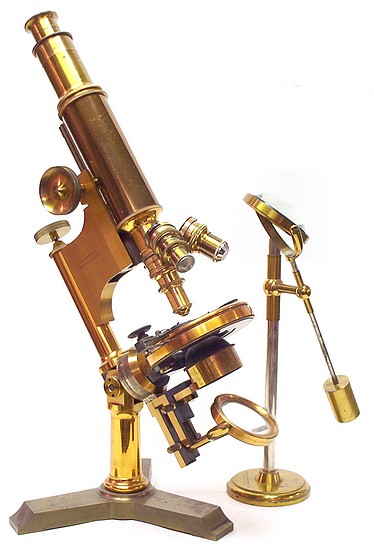
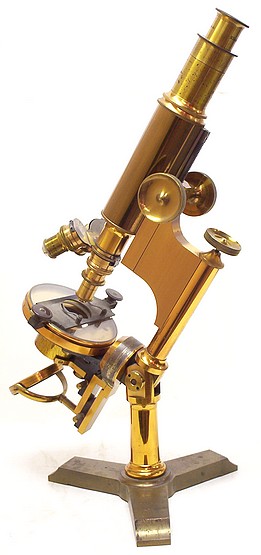
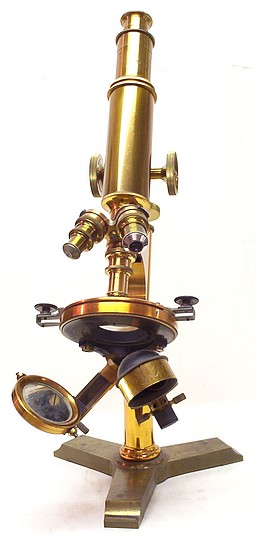
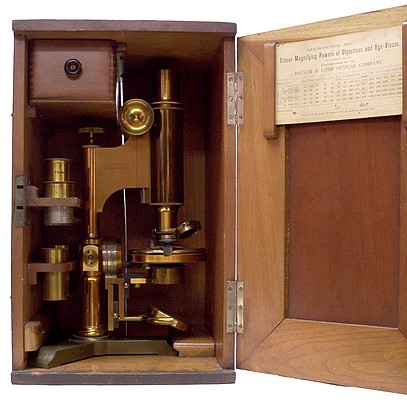
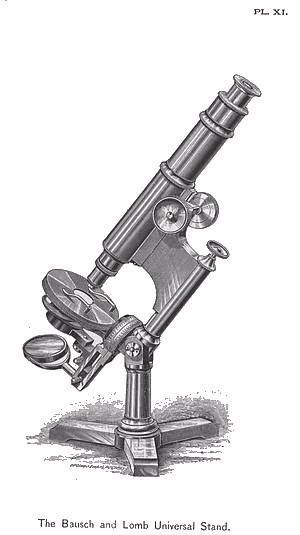
From: Behrens Guide to the Microscope in Botany, 1885
This stand, made by the Bausch and Lomb Co., is represented 1/2 natural size in Plate XI. It comprises the same general features as the one last named, but by a slight increase of distance between the stage and the table sufficient space is secured to admit the use of the largest illuminating or polarizing apparatus, etc., that is usually employed on the largest stands. In fact there is scarcely any of the accessory apparatus of the highest-priced microscopes that cannot, with a few slight modifications in non-essential particulars, be easily and efficiently combined with this. This stand can be obtained as shown in the cut, in a very simple and inexpensive style; but it is capable of a much higher development. It has been constructed, for the use of the writer, with the addition of lengthening mirror bar, graduated draw-tube for use in micrometry and in drawing to scale at any desired amplification, centering adjustment to stage, and graduated rotation of the same, centering substage moved vertically with rack and pinion, and graduated fine adjustment screw with index point, for use in measuring approximately the thickness of objects or cover-glasses. It is named by the makers the "Universal," from the belief that it is possessed of the working capacity of the most elaborate stands. The stage is well adapted to the use of a glass sliding stage; and a mechanical stage moved in all directions by special mechanism can be added if desired.
From the B&L Price list, 7th ed., 1882:
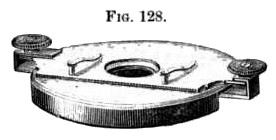
Bausch and Lomb Optical Co.'s Glass Stage and Slide-carrier.This (Fig. 128) is intended as a substitute for the mechanical stage to a certain extent. It consists of a polished plate of glass, incased in a brass ring, which clamps on the circular stage. The slide-carrier, which moves on it, consists of a light metallic plate, and has protruding from its lower surface four small points; at its two ends are prolongations, which are bent downward and inward, and, acting as springs, press against the lower surface of the glass. As the contact between glass stage and slide- carrier is only in these six points, friction is reduced to a minimum, and the action of the latter, although firm, is smooth and steady. It is claimed that it enables work to be done with far more facility than in the ordinary brass stage, where the entire surface of the slide bears on it, and that it is altogether more agreeable. The slide- carrier is provided at each end with small milled heads for manipulation, and has spring clips and a stop for Maltwood finder.
From the Journal of the Royal Microscopical Society.
Bausch and Lomb Optical Co.'s Fine Adjustment. Fig. 126 represents the original of the fine-adjustment referred to at Vol. I. (1881) p. 110. Two strong parallel blades of finely tempered steel, a a, are securely fastened on one end to the back of case Fig. 126. d, on the other to the arm e, which carries the rack and pinion, b shows the micrometer screw, which is fitted to the upper part of the upright arm c, f is the pinion, g the rack and slide, h the tube. Two screws fasten the adjustment case d to the pillar c. An arm projects from the part e and passes into a recess in the pillar c. The springs support the entire body, and as their tension is upward, the projecting arm bears continually against the micrometer screw b, and it is evident that tho distance traversed by tho screw involves the same movement of the arm e, and consequently the body. The only points of contact are at the ends of the springs a, a, where they are fastened respectively at d and e, and on the micrometer screw, and as in the former there is absolutely no friction, there is no wear; while that which may eventually take place in the latter is taken up by the force of the springs.The points of excellence claimed by the makers for this adjustment over all others, are the following: 1. It moves the entire body. 2. It is extremely sensitive and direct. 3. It has no lateral motion or displacement of the image, while adjusting. 4. It has absolutely no lost motion. 5. It can in no manner deteriorate.
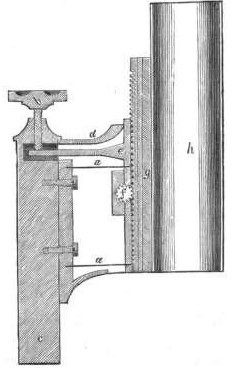
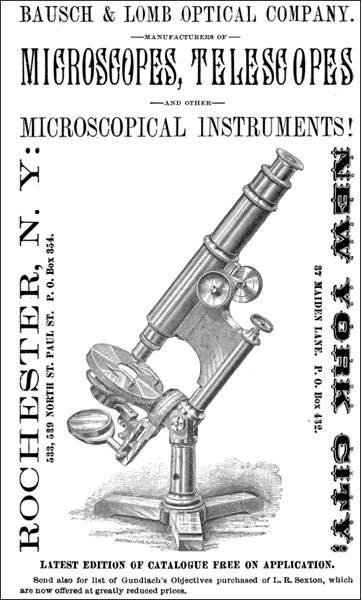
An 1889 Bausch & Lomb advertisement

